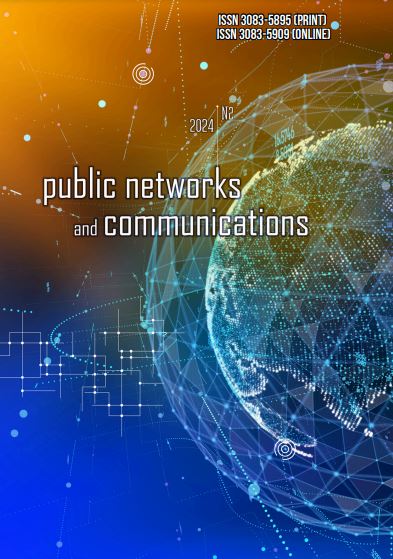Dynamics of Emotionality during a Full-Scale Russian Invasion in Telegram Channels of Professional and Amateur media
DOI:
https://doi.org/10.31558/3083-5895.2024.2.8Keywords:
emotionality, Telegram, Ukraine, news, full-scale warAbstract
In Ukraine, Telegram channels have become a platform for urgent news and alerts related to shelling, air strikes, government decisions and achievements of the Ukrainian armed forces. The posts of these media regardless of the topic contain one or another emotional reaction (emoji). This study tracked the dynamics of the use of these emotional responses over the two years since the start of Russian full-scale invasion. Telegram channels of various types were taken for analysis: "Hromadske", "Toronto Television" and "Ukraina Seychas". Programs written in Python were used to download, process posts, and search for emoji. This made it possible to detect all the reactions present in the posts. To identify the types of emotions, Emojipedia was used, where reactions with corresponding values were searched for by the keywords "sadness", "joy", etc. It was established that negative emotions (anger and sadness) were more popular for telegram channels of professional mass media. Instead, for the anonymous Telegram channel, positive (love and joy) dominated. In addition, it was determined that some emotions remained stable: pride, joy, gratitude for Hromadske, joy for Toronto Television; pride is for Ukraine Now. We also observed that over time the positive emotion changed to a negative one, which, of course, can be explained by the course of events during the full-scale invasion, sadness, fatigue from the events taking place at the front lines, in the country and in the world. It was also found that the environment of Telegram channels is changing the way in which news was previously created: emotions are becoming an important component of it. And although researchers and practitioners in the field of media have yet to establish to what extent the emotional reactions in the news during a full-scale invasion meet professional standards, it is noted that in general the reactions allow, firstly, to see the difference in the approaches to their expression by professional and amateur media, and secondly, to reproduce certain emotional messages for their audiences.
References
Інтерньюз. Українські медіа, ставлення та довіра у 2022 р. URL: https://internews.in.ua/wp-content/uploads/2022/11/Ukrainski-media-stavlennia-ta-dovira-2022.pdf
Стеблина Н. Алгоритм виявлення недостовірних посилань та чуток у телеграм-каналах. Образ. 2022. № 3 (40). С. 94–100. DOI: 10.21272/Obraz.2022.3(40)-94-100
Ilyuk, K., Sapolovych, E., Ryaboshtan, I. «Now we will live to the fullest!». How and why Russia has created a Telegram channels network for the occupied territories of Ukraine. Detector Media. URL: https://detector.media/monitorynh-internetu/article/199010/2022-05-05-now-we-will-live-to-the-fullest-how-and-why-russia-has-created-a-telegram-channels-network-for-the-occupied-territories-of-ukraine/
Wahl-Jorgensen, K. Emotions, Media and Politics. Cambridge: Polity Press, 2019. 248 p.
Steinert, S., Dennis, M.J. Emotions and Digital Well-Being: on Social Media’s Emotional Affordances. Philosophy & Technology. 2022. 35. DOI: 10.1007/s13347-022-00530-6
Duncombe, C. The Politics of Twitter: Emotions and the Power of Social Media. International Political Sociology. 2019. № 13(4). P. 409-429. DOI:10.1093/ips/olz013
Solovev, K., Pröllochs, N. Moral Emotions Shape the Virality of COVID-19 Misinformation on Social Media. ArXiv. 2022. URL: https://arxiv.org/abs/2202.03590
Pröllochs, N., Bär, D., & Feuerriegel, S. Emotions explain differences in the diffusion of true vs. false social media rumors. Scientific Reports. 2021. № 11. DOI: 10.1038/s41598-021-01813-2
Horner, C.G., Galletta, D.F., Crawford, J., Shirsat, A. Emotions: The Unexplored Fuel of Fake News on Social Media. Journal of Management Information Systems. 2021. № 38. Р. 1039 - 1066.
Jakubik, J., Vössing, M., Pröllochs, N., Bär, D., Feuerriegel, S. Online Emotions during the Storming of the U.S. Capitol: Evidence from the Social Media Network Parler. Proceedings of the International AAAI Conference on Web and Social Media. 2023. № 17(1). Р. 423-434. URL: https://doi.org/10.1609/icwsm.v17i1.22157
Oh, S., Lee, S.Y., Han, C. The Effects of Social Media Use on Preventive Behaviors during Infectious Disease Outbreaks: The Mediating Role of Self-relevant Emotions and Public Risk Perception. Health Communication. 2020. № 36. Р. 972 – 981.
Li, X., Zhou, M., Wu, J., Yuan, A., Wu, F., Li, J. Analyzing COVID-19 on Online Social Media: Trends, Sentiments and Emotions. ArXiv. 2020. URL: https://arxiv.org/pdf/2005.14464.
Ma, Y., Yang, Y., Jiao, H. Exploring the Impact of Urban Built Environment on Public Emotions Based on Social Media Data: A Case Study of Wuhan. Land. 2021. № 10(9). 986. P. 1-24. DOI: 10.3390/land10090986
Ihlebæk, K.A., Holter, C.R. Hostile emotions: An exploratory study of far-right online commenters and their emotional connection to traditional and alternative news media. Journalism. 2021. 22. P. 1207 – 1222.
Pellert, M., Metzler, H., Matzenberger, M., García, D. Validating daily social media macroscopes of emotions. Scientific Reports. 2021. 12. DOI: 10.1038/s41598-022-14579-y
Stsiampkouskaya, K., Joinson, A.N., Piwek, L., Stevens, L. Imagined Audiences, Emotions, and Feedback Expectations in Social Media Photo Sharing. Social Media + Society. 2021. 7. DOI: 10.1177/20563051211035692.
Karami, A., Zhu, M., Goldschmidt, B., Boyajieff, H.R., Najafabadi, M.M. COVID-19 Vaccine and Social Media in the U.S.: Exploring Emotions and Discussions on Twitter. Vaccines. 2021. 9. DOI: 10.3390/vaccines9101059
Maier, J., Nai, A. Roaring Candidates in the Spotlight: Campaign Negativity, Emotions, and Media Coverage in 107 National Elections. The International Journal of Press/Politics. 2020. 25. P. 576 – 606.
Choi, J., Lee, S.Y., Ji, S.W. Engagement in Emotional News on Social Media: Intensity and Type of Emotions. Journalism & Mass Communication Quarterly. 2020. № 98. P. 1017 – 1040.
Стеблина Н. Цифрові інструменти для медіааналітика. Одеса: Фенікс, 2023.
Стеблина Н. Аналіз емоційності українського цифрового політичного дискурсу під час повномасштабного вторгнення рф (за матеріалами найбільш популярних телеграм-каналів). Політичне життя. 2022. 2. C. 43 – 47. URL: https://jpl.donnu.edu.ua/article/view/12182/12073

